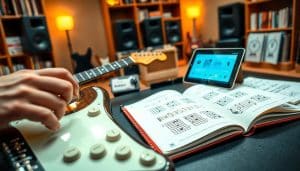Looking to enhance your guitar playing experience? Look no further! In this ultimate guide, we will walk you through everything you need to know about choosing the best guitar looper. Whether you’re a beginner or a seasoned professional, we’ve got you covered. From understanding the different types of loopers to comparing features and finding the perfect fit for your needs, we’ll guide you every step of the way. So get ready to dive into the world of guitar looping and take your music to the next level!
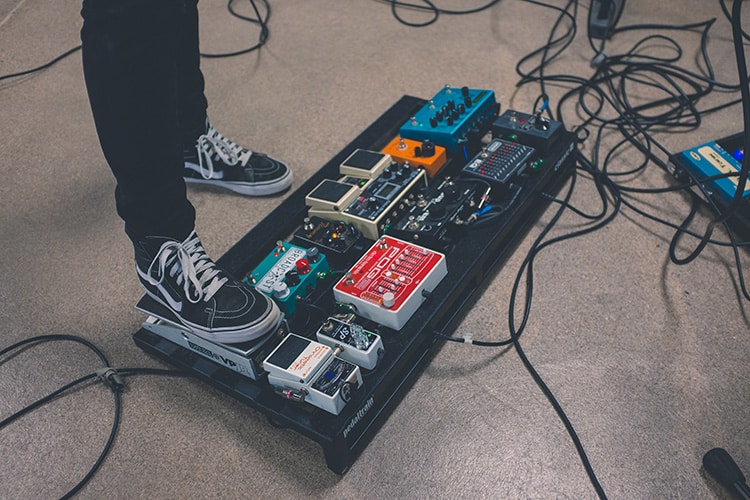
Factors to Consider
Price
When choosing a guitar looper, price is a crucial factor to consider. The price range for loopers can vary significantly, from affordable options for beginners to high-end models with advanced features for professional musicians. It’s important to establish a budget and determine how much you’re willing to invest in a looper. Remember, while more expensive loopers may offer additional features and better sound quality, there are also budget-friendly options available that can still meet your looping needs.
Looping Time
Looping time refers to the length of time a looper can record and play back a loop. For some musicians, a shorter looping time may be sufficient, while others may require longer looping capabilities for more complex compositions. Consider the type of music you play and the length of loops you typically create. If you tend to play longer solos or intricate arrangements, a looper with a longer looping time would be more suitable for your needs.
Number of Loops
The number of loops a guitar looper can store and recall is an important consideration, especially for musicians who perform live or need to switch between different song sections seamlessly. Some loopers allow you to store multiple loops, which can be accessed and played back with ease. If you require the ability to save and switch between multiple loops effortlessly, it’s worth investing in a looper with a higher number of loop storage options.
Control Options
Different loopers offer varying control options, allowing you to manipulate your loops in different ways. Some loopers come with basic controls such as play, stop, and overdub, while others offer more advanced features like reverse playback, half-speed or double-speed playback, and the ability to fade in or out. Consider the level of control you desire over your loops and choose a looper that provides the necessary control options for your musical style.
Sound Quality
Sound quality is paramount when it comes to choosing a guitar looper. The looper should accurately reproduce the sound of your guitar without any loss in tone or clarity. Some loopers may introduce noise or distortion to the looped recordings, which can negatively impact the overall sound. It’s essential to read reviews and listen to audio samples of loopers to ensure that the sound quality meets your expectations and complements your playing style.
Types of Loopers
Single Pedal Loopers
Single pedal loopers are compact, pedalboard-friendly loopers that typically offer a simple and straightforward interface. They usually have limited looping time and storage options but are perfect for beginners or musicians who require basic looping functionalities. Single pedal loopers are easy to operate and can be a great introduction to the world of looping.
Multi-Track Loopers
Multi-track loopers are designed for musicians who require more advanced looping capabilities. These loopers allow you to record and play back multiple layers of loops simultaneously. They offer longer looping times and numerous storage options, making them ideal for live performances and complex compositions. Multi-track loopers often come with additional features, such as built-in effects, rhythm guides, and the ability to sync with other instruments or software.
Desktop Loopers
Desktop loopers are larger units that provide extensive control options and advanced features. They typically offer a wide array of connectivity options and have a more comprehensive user interface, including displays and multiple knobs and buttons. Desktop loopers are well-suited for studio use or musicians who require precise control over their loops and want to have a more immersive looping experience.
Software Loopers
Software loopers are virtual loopers that run on a computer or mobile device. They offer extensive flexibility and can be integrated into digital audio workstations (DAWs) or used as standalone applications. Software loopers provide a wide range of features and options, such as unlimited looping time, advanced effects, and the ability to manipulate loops in real-time. These loopers are perfect for musicians who prefer working with a computer or are already utilizing a DAW for their music production.
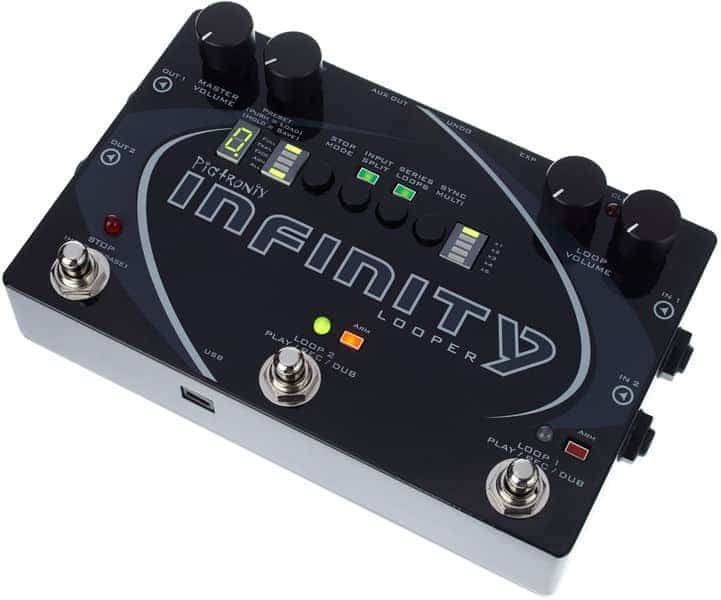
Looping Modes
One-shot Mode
One-shot mode is the most straightforward looping mode, where the looped recording plays back continuously until you manually stop it. It’s ideal for creating repetitive backing tracks or drones. With one-shot mode, the loop restarts immediately after it reaches the end, allowing for seamless looping.
Phrase Mode
Phrase mode divides the looped recording into individual phrases or sections. Each phrase can be triggered separately, allowing for more dynamic looping performances. This mode is especially useful for musicians who want to add variations and breaks to their loops.
Sequential Mode
Sequential mode enables you to record and play back multiple loops in a predetermined sequence. You can pre-program the order in which the loops will be played, creating complex compositions with different sections. This mode is particularly useful for live performances or songwriting.
Serial Mode
Serial mode allows you to stack loops one after another, creating layers of sound. Each new loop overdubs on top of the previous one, resulting in a rich and dense texture. Serial mode is perfect for building up intricate loop arrangements.
Parallel Mode
Parallel mode enables you to play multiple loops simultaneously, without overdubbing. Each loop functions independently and can be manipulated individually. This mode is great for creating harmonies, counterpoints, or layered textures.
Looping Features
Undo/Redo Function
The undo/redo function allows you to remove or restore the last recorded layer in a loop. This feature comes in handy when you make a mistake or want to experiment with different ideas without starting the loop from scratch. The undo/redo function adds flexibility and enhances the creative possibilities of your looping performances.
Quantization
Quantization aligns the start and end points of loops to a specific time grid, ensuring perfect synchronization. This feature is particularly useful when playing with a band or using drum machines or click tracks. Quantization helps maintain precise timing and prevents any timing discrepancies from occurring in your looped recordings.
Pre/Post Effects
Some loopers provide built-in effects that can be applied to your looped recordings. These effects can include reverb, delay, modulation, or distortion, allowing you to enhance and shape the sound of your loops. The ability to apply effects in real-time while looping adds depth and richness to your performances.
Automatic Tempo Detection
Loopers with automatic tempo detection can analyze the tempo of your initial recording and adjust subsequent loops accordingly. This feature ensures that all your loops are in sync, even if you haven’t tapped in a specific tempo. Automatic tempo detection simplifies the loop creation process and facilitates seamless looping performances.
Rhythm Guide
The rhythm guide feature provides a metronome or drum machine that can be synchronized with your looped recordings. It helps you keep a steady rhythm while creating loops and adds a rhythmic foundation to your performances. Whether you need a simple click track or complex drum patterns, the rhythm guide feature can be a valuable tool for practicing and composing.
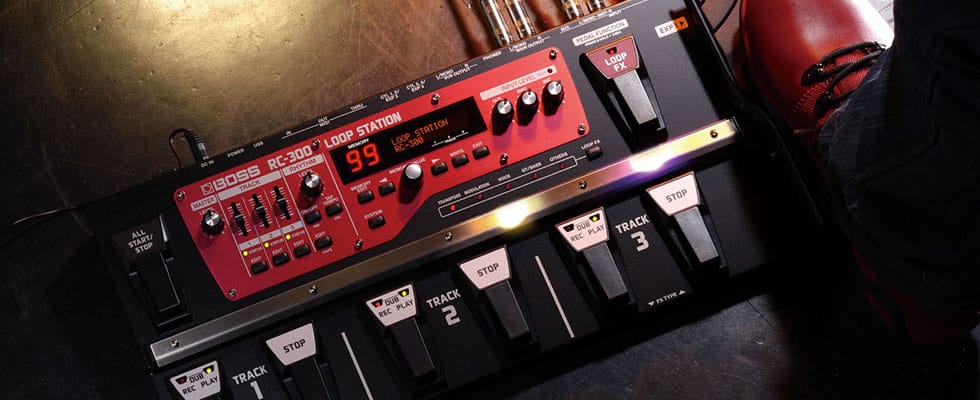
Connectivity Options
Audio Input/Output
Most loopers have audio input and output options that allow you to connect your guitar or other instruments. The audio input is where you plug in your instrument to record the initial loop, while the audio output lets you hear the looped recordings. Some loopers offer stereo output, which can result in a wider and more immersive sound.
USB/MIDI Connectivity
USB and MIDI connectivity options allow you to connect your looper to a computer, MIDI controller, or other devices. This opens up additional possibilities for syncing your looper with software, integrating it into your DAW setup, or controlling it remotely. USB/MIDI connectivity provides more flexibility and expands the functionality of your looper.
Footswitch/Expression Pedal
Many loopers offer the option to connect external footswitches or expression pedals. These peripherals allow for hands-free control over various looper functions, such as starting/stopping loops, overdubbing, or toggling effects. Adding footswitches or expression pedals to your setup enhances the live performance aspect and helps you focus on your playing.
User Interface
Display
The display of a looper is an essential aspect of its user interface. It provides visual feedback on loop length, status, and other parameters. Loopers with clear and organized displays make it easier to navigate through settings, switch between loops, and monitor your looping performances. Look for loopers with bright displays or even backlit displays for better visibility on dimly lit stages.
Knobs/Buttons
The knobs and buttons on a looper control various functions, such as volume, tempo, or effect levels. Ergonomic and well-placed knobs and buttons ensure intuitive operation and quick access to important parameters. It’s important to consider the build quality and durability of these controls, especially if you plan on using the looper for live performances.
Footswitches
Footswitches are the main control interface for most loopers, allowing you to start/stop loops, record overdubs, or switch between loops. The number and size of footswitches vary depending on the looper model. Loopers with larger footswitches make it easier to trigger functions accurately, especially while performing on stage. Consider the number and placement of footswitches that would be most comfortable and convenient for your playing style.
Presets
Some loopers offer preset options, allowing you to save and recall specific loop settings for different songs or performances. Presets make it easy to switch between different tonalities, loop lengths, or effects settings with just a press of a button. If you frequently switch between different loop configurations, a looper with preset capabilities can save you time and streamline your workflow.

Build Quality and Portability
Build Quality
The build quality of a looper is crucial, especially if you plan on using it frequently or taking it on the road. Look for loopers that are built with durable materials, such as metal or high-quality plastic, and have solid construction. Loopers with rugged enclosures and reinforced footswitches are more likely to withstand the rigors of regular use and provide long-lasting performance.
Weight and Size
Consider the weight and size of a looper, especially if you need it to be portable or plan on integrating it into a pedalboard setup. Compact and lightweight loopers are easier to transport and can be a better fit for musicians who frequently travel or perform live. However, keep in mind that smaller loopers may have fewer controls or options compared to larger ones.
Battery Life
For musicians who perform in locations without easy access to power outlets, battery life is an important consideration. Loopers with longer battery life allow for extended playtime without the need for frequent recharging or using additional power supplies. Make sure to check the estimated battery life of a looper and consider purchasing an additional power adapter or battery backup if necessary.
Compatibility
Compatibility with Instruments
Check the compatibility of a looper with your specific instrument. Most loopers are designed for use with guitars, but some may also work well with other instruments such as keyboards or bass guitars. Consider the input and output options of the looper and ensure that they align with the connections on your instrument.
Compatibility with Operating Systems
If you choose a software looper, ensure that it is compatible with your computer’s operating system or the software you plan to use it with. Some software loopers are available for specific operating systems, while others may work across multiple platforms. Before purchasing a software looper, check the system requirements and compatibility information provided by the manufacturer.
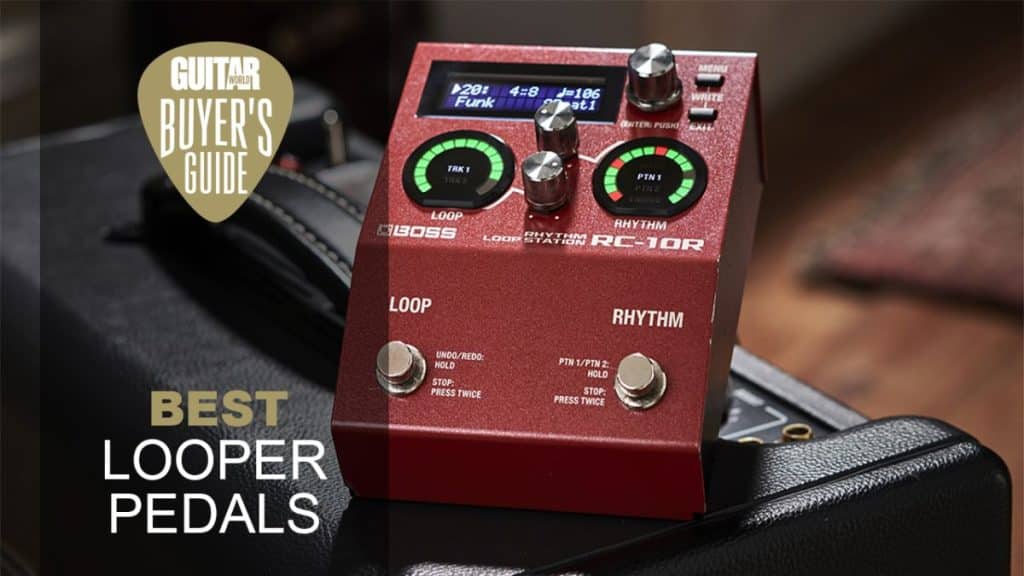
Reviews of Top Guitar Loopers
Looper X
insert review for Looper X here
Looper Y
insert review for Looper Y here
Looper Z
insert review for Looper Z here
Tips for Using a Guitar Looper
Start with Simple Chord Progressions
When starting out with a guitar looper, it’s best to begin with simple chord progressions. As you become more comfortable with the looping process, you can gradually incorporate more complex chords and progressions into your loops. Starting with simple chord progressions allows you to focus on timing and precision, which are essential elements of effective looping.
Experiment with Different Rhythms
Looping provides a fantastic opportunity to experiment with different rhythms and create unique grooves. Try layering different rhythmic patterns on top of your chord progressions to add interest and variety to your loops. Experiment with syncopation, off-beat accents, or even odd time signatures to push the boundaries of your looping performances.
Layer and Build Loops
One of the most exciting aspects of looping is the ability to layer multiple loops to build intricate arrangements. Start by recording a simple chord progression, and then add additional layers on top to embellish the sound. Experiment with stacking harmonies, melodic lines, or percussive elements to create complex and engaging loops.
Practice Timing and Precision
To create seamless and tight loops, it’s crucial to practice your timing and precision. Work on playing in time with a metronome or drum machine and strive to maintain a steady rhythm throughout your looping performances. The more you practice, the better you’ll become at synchronizing your playing with the looping process, resulting in professional-quality loops.
Utilize Looping Modes Efficiently
Take the time to explore and understand the different looping modes available on your looper. Each mode offers unique possibilities for creating and manipulating loops. Experiment with sequential mode to create structured compositions, or tap into the creativity of phrase mode for dynamic and evolving loops. The more you explore these modes, the more you’ll discover new ways to express yourself through looping.
In conclusion, choosing the best guitar looper depends on several factors. Consider the price, looping time, number of loops, control options, and sound quality when making your decision. Explore the different types of loopers, such as single pedal loopers, multi-track loopers, desktop loopers, and software loopers, to determine which one suits your needs. Familiarize yourself with the different looping modes and features available, such as one-shot mode, phrase mode, undo/redo function, and pre/post effects. Look for loopers with suitable connectivity options, user-friendly interfaces, and sturdy build quality. Consider compatibility with your instruments and operating systems. Read reviews to learn about the best guitar loopers on the market and take advantage of these devices by following tips for using a guitar looper effectively. With the right guitar looper, you can unlock a world of creative possibilities and elevate your musical performances to new heights.


